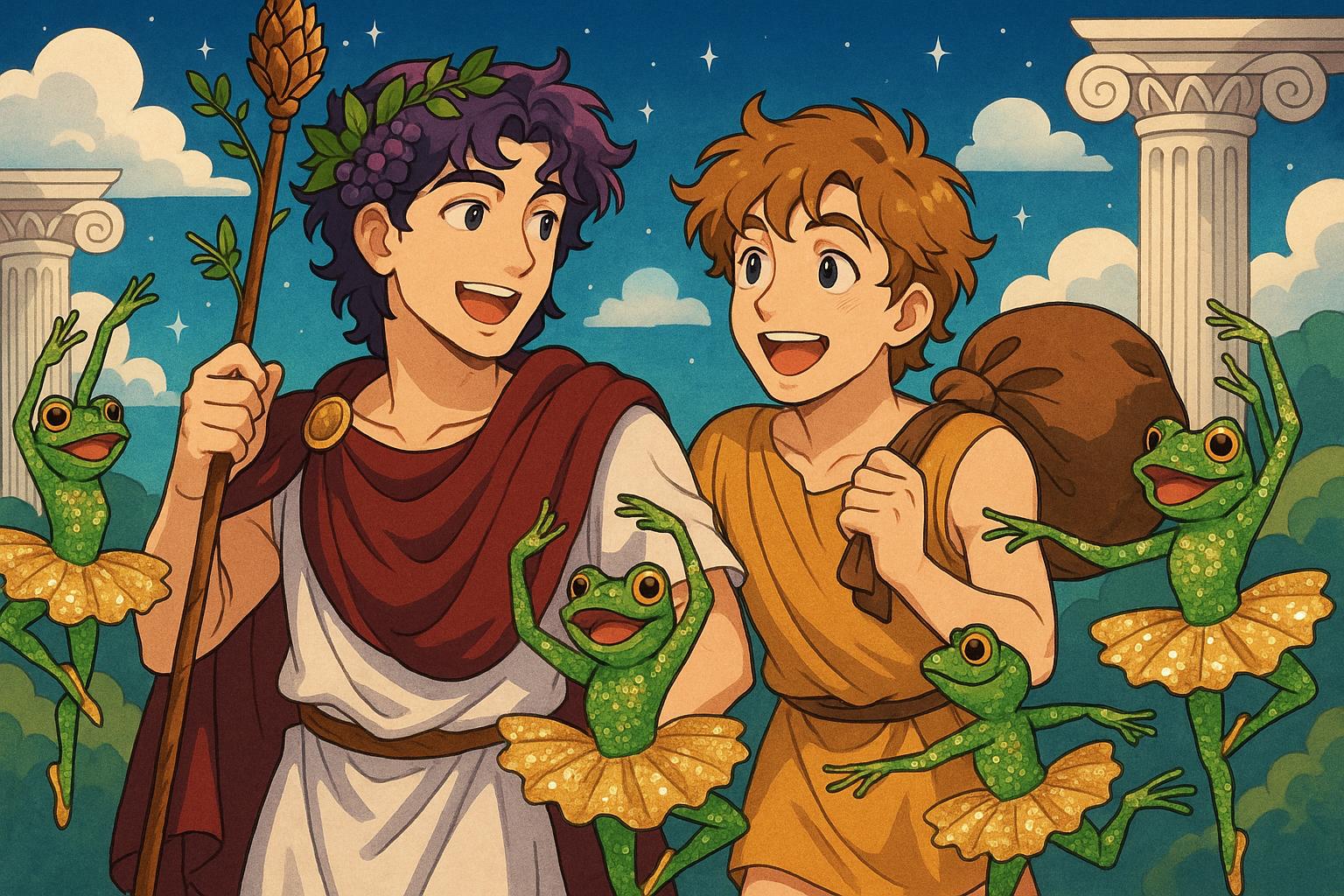The recent revival of Stephen Sondheim's The Frogs at Southwark Playhouse offers a rare glimpse into a lesser-known facet of the legendary composer’s oeuvre. Originally staged at Yale in 1974, Sondheim described the experience as “one of the few deeply unpleasant professional experiences I’ve had.” The production was later expanded for Broadway in 2004, a transition during which Sondheim remarked it “suffered from inflation.” This current iteration, featuring Kevin McHale making his UK stage debut as Xanthias, aims to reconcile the musical's tumultuous past with its unique appeal.
Set against the backdrop of Aristophanes' ancient Greek satire, the narrative follows the demigod Dionysos, who, accompanied by his intern-like slave, embarks on a quest to retrieve a notable playwright from the underworld. Although the musical initially presents a whimsical journey, it does grapple with deeper themes. Dionysos’s choice between literary giants — contemplating George Bernard Shaw before ultimately opting for Shakespeare — encapsulates a broader discourse on artistic merit and relevance.
Despite the richness of its source material, The Frogs occasionally stumbles under the weight of its somewhat superficial book by Burt Shevelove, which has led to a series of scenes that feel more like skits than a cohesive narrative. This results in an experience that, while punctuated with clever musical numbers, struggles to fully develop characters or delve into underlying themes, such as Dionysos' parental complexities and the symbolism associated with frogs as embodiments of societal complacency.
The performance features a vibrant array of characters, including a comedic Herakles portrayed by Joaquin Pedro Valdes and a breathy cabaret number delivered by the guest star Victoria Scone, who plays Pluto. The choreography by Matt Nicholson adds a playful energy to the production, particularly with the frogs engaging in a whimsical ballet adorned with sequins and goggles. However, despite these lively elements, the overall execution suffers from pacing issues, particularly in the drawn-out exchange between Shaw and Shakespeare that leans heavily on literary references without injecting sufficient levity.
While some may argue that the musical’s jests don’t always land, the show's strength undeniably lies in Sondheim’s intricate melodies and witty lyrics. “Hippy-dippy insurrectionists” juxtaposed against “hasty pasty-faced perfectionists” reveal the composer’s knack for rhyme and wordplay, even as Dionysos critiques the incessant rhyming around him. Melancholic undertones permeate Sondheim's work, providing depth that contrasts with the otherwise light-hearted scenes, ensuring that the musical resonates emotionally despite its structural shortcomings.
Overall, the revival showcases not merely Sondheim’s musical prowess but also the challenges of adapting a work conceived under singular circumstances to modern sensibilities. While the production may not achieve the grandeur suggested by its conceptual ambition, the enduring charm of Sondheim’s music continues to shine through, inviting audiences to ponder the balance between tradition and innovation in the world of theatre.
Reference Map:
- Paragraph 1 – [1], [3], [4]
- Paragraph 2 – [1], [2], [6]
- Paragraph 3 – [2], [3], [5]
- Paragraph 4 – [1], [7]
Source: Noah Wire Services
